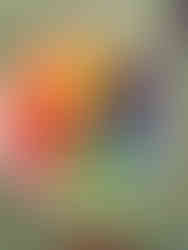Lesson 5: Color Wheels
- Madison Kelley
- Nov 14, 2022
- 2 min read
Updated: Nov 17, 2022
Art Experience:
Students will learn how to create a color wheel, in order to consider how colors mix and are used in a later splatter painting experience. They will explore applications of color by creating a collage for each color of the color wheel with assorted mixed materials. They will then create a splatter painting with watered down acrylic paint and spray bottles to explore color mixing.
Essential Understanding:
Students will understand the basics of the color wheel and color mixing and use of multiple new mediums.
Objectives/outcomes:
Students will create a color wheel collage using watercolor and other materials, then play with color interactions by using watered down acrylic paint in a spray bottle to create an abstract painting.
Skills:
· Watercolor painting
· Recognize and create a color wheel
· Collage-making
· Color mixing
Reflection:
What worked well? Why?
The color wheel lesson as a whole went well. Students all enjoyed painting as usual, and continued to be able to learn how to paint cleanly and within a set space. The collage lesson was also enjoyed by everyone. Being able to work with new materials seemed like it was interesting to everyone. Doing simple tasks like cutting paper or placing stickers let all of them have a fun time placing decorative elements themselves. One student especially enjoyed looking through magazines for matching colors, and cutting out images. The collages all ended up unique and took most students most of the time to work on since they had so much to work with and consider.
What didn’t work well? Why?
The splatter paint was difficult to execute very effectively, and made the lesson the worse of the two. The paper got too watery too quickly in general, and mixing the paint colors became very hard. Only a couple of students got to trying it, as well, and adjustments had to be made for them to pull it off at all. The paper had to be taped down for the project to work well, and moving them to dry caused the water to move uncontrollably. It became hard to implement color mixing as a result, and made the lesson overall difficult to properly implement with the color wheels.
What would you do differently?
Related to the splatter paint: because of all the issues that came up, I would look for an alternate way to make a splatter painting lesson work. An alternate material for painting, or a different paint altogether (probably watercolor) would likely be more effective than the spray bottles. It would also help cut down on mess and difficulty moving pieces around if the medium was changed for that specific lesson. An easier to use material would also help include color mixing more, possibly even focusing on doing color mixing before doing the splatter portion of the project, so students could adapt what they learned from the color wheel to a different project.
Documentation:













Comments